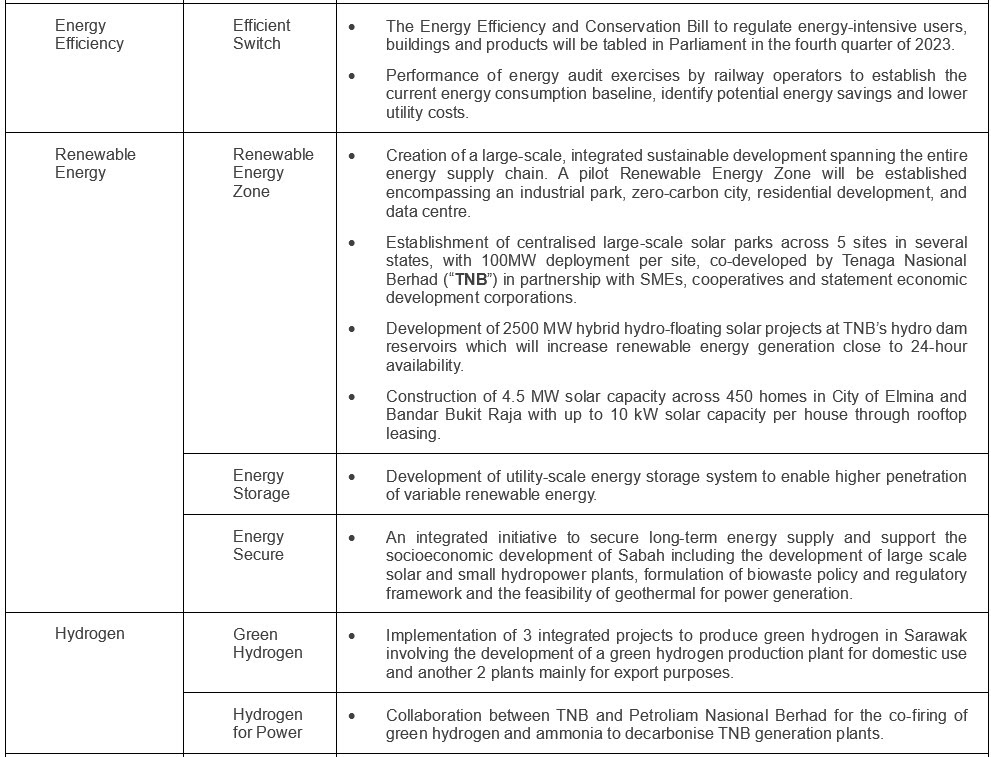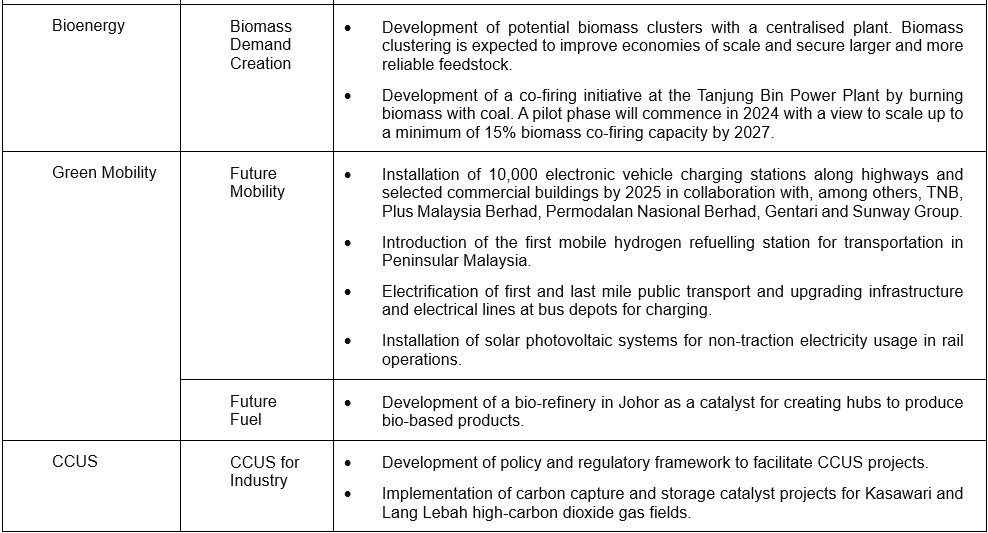On 27 July 2023, Part 1 of the National Energy Transition Roadmap (“NETR”) was released by the Ministry of Economy of Malaysia, which, in short, provides a renewables-centred, sustainable energy pathway towards a high value green economy involving impact initiatives and 10 flagship catalyst projects based on 6 energy transition levers: energy efficiency, renewable energy, hydrogen, bioenergy, green mobility and carbon capture, utilisation and storage (“CCUS”).
The Guiding Principles
Four main guiding principles underlie the NETR:
- the alignment of the energy sector with Malaysia’s aspirations and commitments to sustainable development;
- the need for the energy transition to be just, inclusive and cost-effective;
- the need for effective governance and a whole-of-nation approach; and
- the importance of creating high-value employment for people and generating high impact economic opportunities for small and medium enterprises (“SMEs”).
Flagship Catalyst Projects and Impact Initiatives
An overview of the 10 flagship catalyst projects and initiatives as outlined in Part 1 of the NETR are as follows:
Review of Renewable Energy Policies
In tandem with the development of the NETR, the existing renewable energy policies have also been updated, resulting in the following decisions:
- increase in the target for installed renewable energy capacity from 40% in 2035 to 70% by 2050;
- expansion of renewable energy development based on the concept of a self-contained system to encourage investment in the renewable energy value chain and diversify renewable energy programmes based on the principle of “willing buyer, willing seller”;
- scaling up of the installation of solar systems in government buildings;
- establishment of an electricity exchange system to allow cross-border renewable energy trade, building on the ASEAN power grid initiative; and
- bolstering of the national power grid to accommodate higher renewable energy uptake through introducing smart grid features and broadening access to third parties.
RLL Thoughts
The highly anticipated Part 1 of the NETR has brought greater insight into the Malaysian Government’s roadmap to accelerate the country’s energy transition towards a low carbon future and better clarity on the framework within which the energy transition is to take place. Much, however, will depend on how the Malaysian Government will implement the outlined projects and impact initiatives and how these are initiated into actions. Part 2 of the NETR, which focuses on establishing the low-carbon pathway, national energy mix and emissions reduction growth targets as well as the enablers needed for the energy transition, is anticipated to be published in the near future. Read together with Part 1, this should be able to provide sharper focus and a clearer picture on the NETR’s role in supporting the Twelfth Malaysia Plan 2021-2025 and the newly launched National Energy Policy in the country’s effort to becoming a low carbon nation in 2040 and achieving net-zero greenhouse gas emissions by 2050. With the creation of different opportunities for investment across the renewable energy sector and its related industries in Malaysia, businesses that align their offerings with the NETR’s energy transition goals have the potential to thrive and contribute to Malaysia’s economic and environmental objectives.
Further details in relation to the NETR can be found in the policy document titled “National Energy Transition Roadmap Part 1: Flagship Catalyst Projects and Initiatives”, which can be viewed here.







